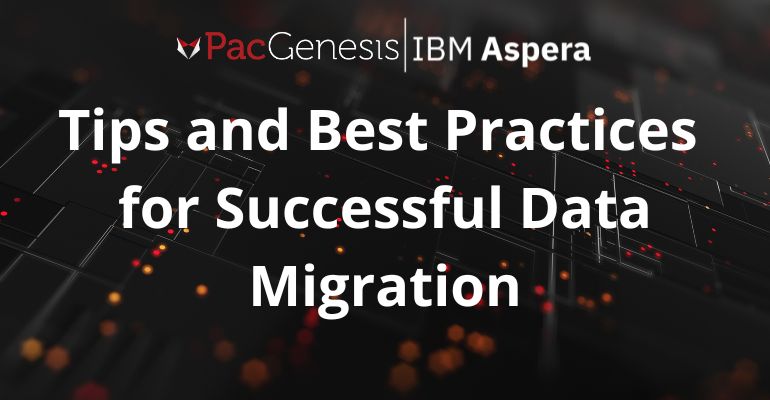Tips and Best Practices for Successful Data Migration

Tips and Best Practices for Successful Data Migration
If you’re looking to migrate large sets of data for your business, ensuring a smooth process and maintaining data integrity is critical.
Here are some tips and best practices to guide you through a successful data migration project.
Preparing Your Data for Migration
Before you start, make sure you are defining the scope of your migration project. Identify all the data sources and destinations, as well as understand the volume and type of data involved.
Perform a comprehensive inventory of your data and identify critical data elements that need special attention during migration. While you do that, evaluate the quality of your existing data. You’ll want to address issues like duplicates, missing values, and inconsistencies before you migrate to ensure you’re working with clean data.
Choosing the Right Tools & Technologies
Part of a successful data migration will include investing in the right tools and technologies to help streamline the process.
- Migration Tools: Review and compare data migration tools and platforms. Choose tools that meet your specific project requirements and offer robust features.
- Automation: Utilize automation to streamline the migration process. Implement scripts and automation tools to handle repetitive tasks efficiently, reducing the risk of human error.
- Testing Environment: Set up a testing environment that closely mimics your production environment. This allows you to trial migration processes and identify issues before executing the migration.
Ensuring Data Integrity
To ensure that your data is secured while you’re migrating, there are a few things you want to do to safeguard your business’s information. Implementing robust validation processes will help, including verifying data accuracy and completeness post-migration to ensure no data is lost or corrupted.
Part of this is also performing data integrity checks throughout the migration process. Use techniques like checksums and hashing to ensure the integrity is maintained. Reconciling migrated data with source data will also help to identify any discrepancies for data accuracy.
Post-Migration Activities
After you’ve completed your migration, there are a few tasks you’ll want to complete afterwards:
- User Acceptance Testing (UAT): Conduct UAT to validate the migration. Gather feedback from users and make necessary adjustments to address any issues.
- Documentation: Document the entire migration process. Include methodologies, tools used, and lessons learned to provide a reference for future projects.
- Training and Support: Provide training to users on the new system. Ensure ongoing support to address any post-migration issues that arise.
Finding the Right Tools & Solutions with PacGenesis
With PacGenesis, you gain access to a team of experts who specialize in data transfer and cybersecurity. Our professionals work closely with you to understand your specific needs and implement the solutions you need. PacGenesis partners with industry leaders in both fields to help you secure your data and information. Our commitment to your success doesn’t end with the migration; we provide ongoing support to address any issues and help you achieve long-term data integrity.
By partnering with PacGenesis, you can navigate the complexities of data migration with confidence, knowing you have a trusted partner dedicated to your success. Contact PacGenesis today and let us help you ensure a seamless and secure data transition.




